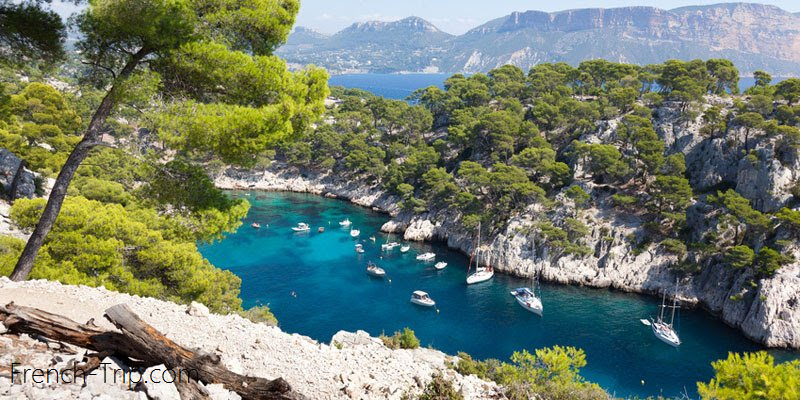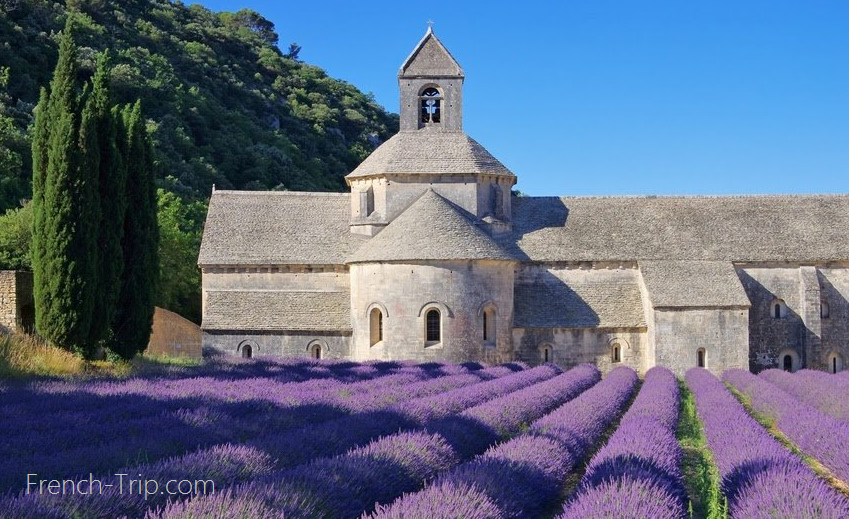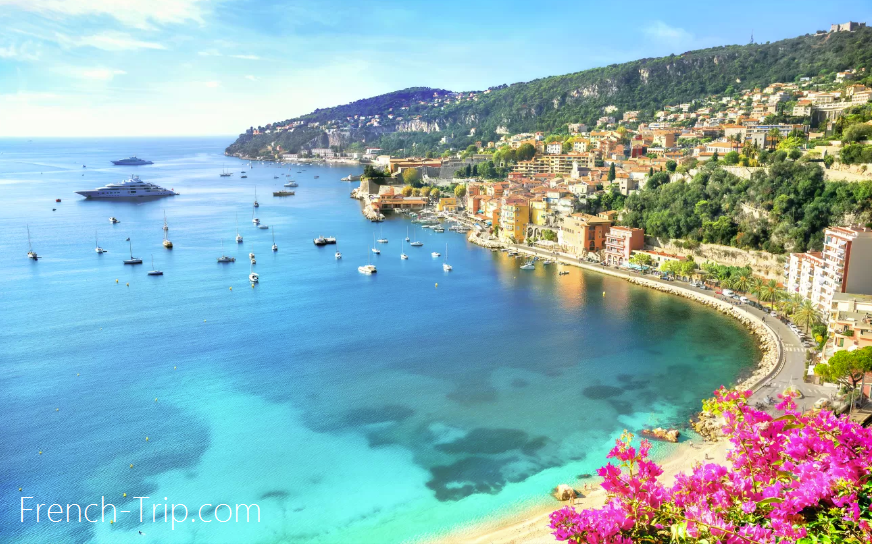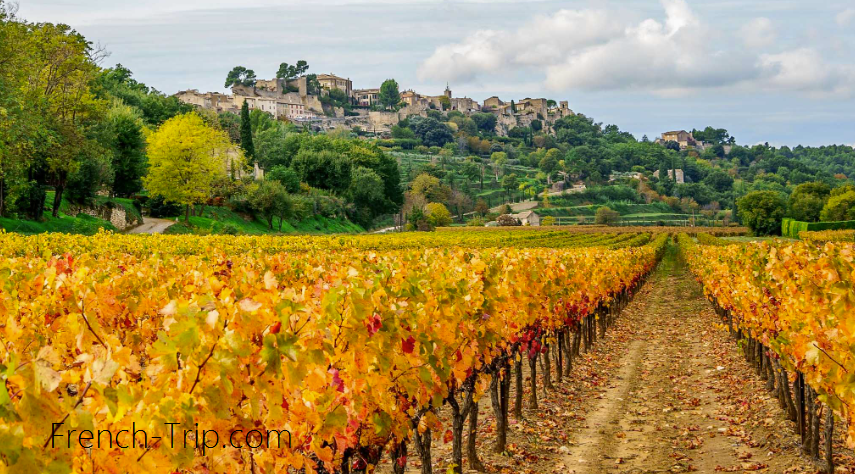Provence – when to visit? Climate and seasons

The ideal time to visit Provence varies with the seasons, offering something special throughout the year. Spring, from April to June, blankets the region in vibrant colors with blooming lavender and wildflowers. Summer, from June to August, boasts warm Mediterranean weather, making it perfect for beach outings and lively festivals. Autumn, in September and October, brings a pleasant climate, ideal for vineyard tours and enjoying the harvest season. Winter, from November to March, offers a quieter, more serene experience with the chance to explore historic sites without the summer crowds, but keep in mind that some attractions may have reduced hours or seasonal closures.

Climate and seasons in Provence
The climate in Provence-Alpes-Côte d’Azur varies depending on the specific location within the region, but overall, Provence enjoys a Mediterranean climate characterized by hot, dry summers and mild, wet winters.
Summer (June to August)
Summers in Provence are typically hot and dry. Daytime temperatures often exceed 30°C (86°F) and can occasionally climb above 35°C (95°F) in some areas, particularly in the coastal areas of the Côte d’Azur. This is the peak tourist season when visitors flock to the region to enjoy the sunny weather and Mediterranean beaches.

Autumn (September to November)
Autumn in Provence is generally pleasant, with mild temperatures and decreasing rainfall. September is still warm, making it a great time to visit. As the season progresses, temperatures gradually cool down, and by November, you can expect cooler and wetter weather, especially in the northern part of the region.

Winter (December to February)
Winters in Provence are mild compared to many other regions in France. Coastal areas, including Nice and Marseille, experience relatively mild winters with daytime temperatures averaging around 12-15°C (54-59°F). But there are many days, especially in February, when you can enjoy almost summer weather with temperatur above 20°C. Also during February and beginning of March one can find plenty of different carnivals in Provence and French Reviera, which in combination with sunny and not hot days makes it ideal break from winter cities.
However there is a certain chance to face Mistral – a strong, cold wind that blows through the Rhône Valley and affects the Provence-Alpes-Côte d’Azur region in France. It is most common during the winter months, typically from November to March. The Mistral can blow for several days at a time and is known for its powerful gusts, which can reach speeds of up to 100 kilometers per hour (about 62 miles per hour) or even higher in some areas. This wind can have a significant impact on the weather and climate in the region, causing rapid temperature drops and drying out the atmosphere. While the Mistral can bring clear skies and sunny weather, it can also be quite intense and challenging to deal with, so it’s something to be aware of when planning a visit to the region during the winter months.
Inland areas and higher elevations in the Alps can see colder temperatures and occasional snowfall, making them popular destinations for winter sports enthusiasts.

Spring (March to May)
Spring brings warmer and more comfortable weather to Provence. Temperatures gradually rise, and by May, the region is often in full bloom with colorful flowers and lush landscapes. Spring is a great time for outdoor activities, including hiking and cycling.
It is also the perfect time to explore hilltop villages like those in Vaucluse, which are not as crowded as in the summer, and the weather is not too hot for climbing their steep, pebbled streets. The best time for this is March to April, as in May, temperatures can easily reach up to 30°C.
Also, it’s important to consider the possibility of the Mistral wind, which can significantly lower temperatures despite sunny days. This very strong wind also dries out the atmosphere and may cause discomfort, such as coughing. On such days, outdoor walks may not be very pleasant, so it’s advisable to have a backup plan in case of bad weather.

Rainfall
Provence experiences most of its rainfall during the cooler months, particularly from October to April. The northern and inland areas receive more precipitation than the coastal areas, where rainfall is relatively low. The Mistral, a strong northwesterly wind, can also affect the region and bring dry and cold conditions, especially in the Rhône Valley.
Overall, Provencal Mediterranean climate is one of its major attractions, drawing visitors with its long, sunny summers and relatively mild winters. This climate contributes to the region’s lush vineyards, beautiful gardens, and outdoor recreational opportunities throughout the year. However, it’s important to note that microclimates exist within Provence, so weather conditions can vary from one location to another.
Best time to visit Provence
The best time to visit Provence-Alpes-Côte d’Azur largely depends on your personal preferences and the type of experience you’re seeking.
- Summer (June to August): Summer is the peak tourist season in Provence, and for good reason. The weather is hot and sunny, making it ideal for beachgoers and outdoor enthusiasts. It’s the perfect time to enjoy the Mediterranean beaches, water sports, and the vibrant cultural scene. However, it can be crowded, and accommodations may be more expensive. If you enjoy the hustle and bustle of summer tourism, this is the time to go.
- Autumn (September to November): September is a fantastic time to visit Provence. The weather is still warm, and the crowds have started to thin out. It’s an excellent choice for those who want to enjoy pleasant temperatures, explore picturesque villages, and partake in outdoor activities without the summer rush. Late October and November are quieter but can be cooler and wetter.
- Winter (December to February): Winter in Provence is milder than in many other parts of Europe, making it an attractive destination for those seeking a winter escape. The coastal areas remain relatively mild, making it possible to enjoy outdoor activities, while the inland and mountainous regions offer skiing opportunities. If you’re interested in winter sports or prefer a quieter, off-season experience, this can be a great time to visit.
- Spring (March to May): Spring is another lovely time to visit Provence. The weather gradually warms up, and the region bursts into bloom with colorful flowers and lush landscapes. March and April are less crowded than the peak summer months, making it an excellent time for sightseeing, hiking, and enjoying outdoor festivals.

In summary, the best time to visit Provence depends on your preferences:
- If you prefer hot weather and don’t mind crowds, visit in summer.
- For pleasant weather with fewer crowds, choose September or early October.
- Winter is great for mild temperatures along the coast and winter sports in the mountains.
- Spring offers blooming landscapes and comfortable weather for outdoor activities.
→ Return back to Provence-Alpes-Côte d’Azur travel guide
Archives
Calendar
| M | T | W | T | F | S | S |
|---|---|---|---|---|---|---|
| 1 | 2 | 3 | 4 | |||
| 5 | 6 | 7 | 8 | 9 | 10 | 11 |
| 12 | 13 | 14 | 15 | 16 | 17 | 18 |
| 19 | 20 | 21 | 22 | 23 | 24 | 25 |
| 26 | 27 | 28 | 29 | 30 | 31 | |